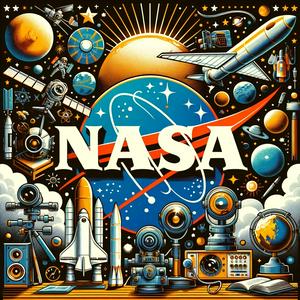Space news roundup: NASA's PUNCH mission, Axiom 4 launch, and Artemis II progress amidst budget shifts
Welcome to the latest episode of Spacefront, where we break down NASA’s news and why it matters here on Earth. This week’s headline: NASA’s PUNCH mission has delivered its first breathtaking images of coronal mass ejections—massive bursts of solar material that can disrupt satellites and communications here at home. These pictures, captured by the four-satellite Polarimeter to Unify the Corona and Heliosphere, or PUNCH, represent a new era in understanding how the Sun’s wild weather affects our planet. Lead scientist Craig DeForest calls it “just the opening act,” hinting at even more insights to come as PUNCH continues its work.But that’s not all; it’s been a dynamic stretch for NASA across science, human spaceflight, and policy. On the operational front, the Axiom Mission 4 launch to the International Space Station, which includes astronauts from the US, India, Poland, and Hungary, was postponed due to weather and a minor technical issue with the Falcon 9 rocket. The rescheduled launch shows the collaborative resilience of NASA, SpaceX, and international partners as commercial astronaut missions become routine and globally representative.Behind the scenes, Acting NASA Administrator Janet Petro is pushing organizational changes she hopes will streamline integration across the agency. In her recent address, she emphasized a renewed focus on cross-team collaboration and safety, especially as Artemis II astronauts are deep into simulations and emergency training for their historic trip around the Moon.Turning to the budget, Congress is set to provide NASA with a modest increase for 2025—about a 2% bump, totaling over $25 billion. However, this comes with strings attached. Lawmakers are prioritizing deep space exploration—particularly the Artemis program—while cutting funding for science projects, leaving initiatives like Earth science and astrophysics under pressure to do more with less. Experts warn these shifts could slow the pace of discoveries and innovation, impacting research institutions and business partners nationwide. Yet, Artemis—NASA’s program to return astronauts to the Moon—remains on track, protecting thousands of jobs and local economies tied to the space industry.There’s also national and international impact: as NASA strengthens private sector ties through missions like LunaRecycle, which seeks ways to recycle waste on the Moon, American companies gain opportunities at the cutting edge of off-world tech. Meanwhile, international partnerships, highlighted by Axiom 4’s diverse astronaut lineup, bolster diplomatic ties and ensure the US stays a leader in global space exploration.For citizens at home, you can engage with NASA’s missions directly. Stream the new documentary “Cosmic Dawn” to relive the James Webb Space Telescope’s journey, or check out citizen science projects and STEM challenges on NASA’s website. Lawmakers are still finalizing the budget, and your voice counts—reach out to your representatives if you care about science, education, or exploration. Looking ahead, watch for Artemis II milestones and updates on PUNCH’s solar discoveries—these missions will shape headlines and policy debates in the coming months. For more, visit nasa.gov or follow NASA’s official channels. And as always, keep looking up—because space is closer, and more connected to our lives, than ever.

